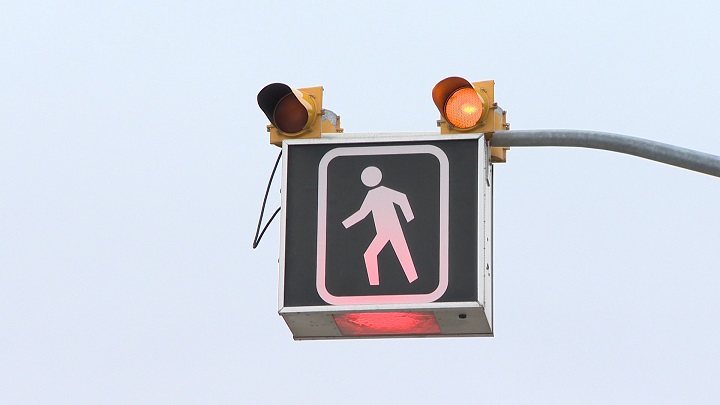Never mind distracted driving, city officials are now finding themselves trying to solve the problem of distracted walking.

The executive director of the Office of Traffic Safety (OTS) told the Edmonton Police Commission Thursday, they’re looking at thermal technology that will help save distracted walkers from themselves.
It’s being tried in British Columbia near a high school where there have been incidents where teenagers are so engrossed looking at their cell phones they’ve walked into traffic.
This technology would automatically activate the cross walk signal, because kids are too busy.
“They have a thermal camera that actually detects the presence of body heat and will activate crosswalk signals once they’re in close proximity,” said Gerry Shimko with the OTS. “That I believe came as a result of some bad experiences where students might have been struck and seriously injured or killed in those areas.”
If the phone is really that interesting, there’s also work being done on sending a text signal that will display on the screen. Shimko said it’s being advanced in the U.S.
“An approaching car can activate something on the phone that says, ‘by the way, I’m approaching.’
“We’ve seen things in the States where the technology between pedestrians and vehicles, when they detect two in proximity, will activate crosswalks by themselves, so it’s out there. It’s just a matter of us finding it.”
The OTS submits an annual report to city council, and Shimko said, for the first time ever, they’re gaining enough confidence from the work they’ve done. It’s possible the next city council will be given a target date for when there will be zero deaths from traffic accidents and pedestrian mishaps.
“We’ve kind of talked about roughly around what this might look like but, we’re seeing in other places, and in some of the preliminary numbers, perhaps 2030 might be something we might look at – but that’s still in the works,” Shimko confirmed.
The numbers have dropped from over 8,200 injuries in 2006 to 3,200 one decade later in 2016. That gives officials confidence that measures, like those flashing speed signs that get drivers to slow down, are working.
“We can now estimate what the impact will be of some of these counter-measures and what the cost might be. Then we can move it forward,” Shimko said. “Using those where we have the funding and matching our objective of getting to zero.”
He said the confidence comes from how the population has grown in that time by 230,000 people and how city council has bought in with bipartisan support over those 20 years.





Comments